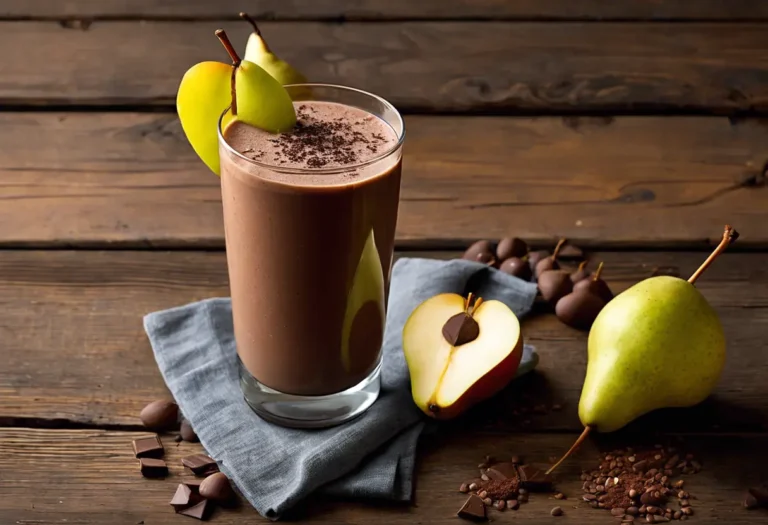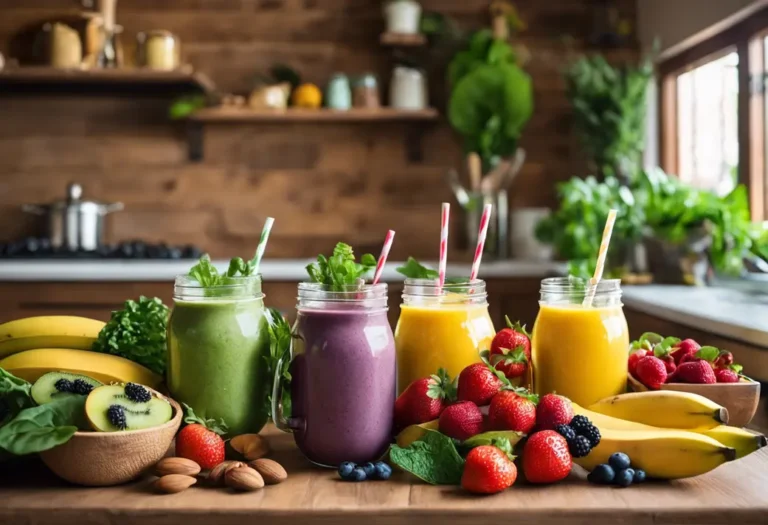Eating keto can be an effective way to lose weight, improve health, and boost mental clarity. However, getting started with the keto diet can seem overwhelming for beginners. This comprehensive guide covers everything you need to know about how to start and stick to a keto diet.
What is the Keto Diet?
The ketogenic or “keto” diet is a very low-carb, high-fat diet that forces your body to burn fat for energy instead of carbohydrates.
On a standard high-carb diet, your body uses glucose from carbs as the main fuel source. On keto, your body enters a metabolic state called ketosis and becomes incredibly efficient at burning fat.
In ketosis, your liver converts fat into fatty acids and ketone bodies which become your new primary fuel source when glucose levels are low.
Main Principles of How to Eat Keto
- Very low carb intake, usually 20-50 grams per day
- Moderate protein intake
- High fat intake to replace carbs
- Below 50 grams of net carbs per day induces ketosis
The keto diet leads to rapid weight loss and has been shown to have many other benefits like lower blood sugar, improved focus, and reduced inflammation.
Benefits of Eating Keto
Here are some of the top scientifically-proven benefits of following a ketogenic diet:
- Weight loss – The keto diet promotes fat burning and often leads to major weight loss without counting calories. Several studies show keto is more effective for weight loss than low-fat diets.
- Reduced appetite – Eating keto leads to lowered insulin levels and increased ketones which reduces hunger and appetite. People naturally eat fewer calories without trying.
- Improved heart health – Eating keto has been shown to increase “good” HDL cholesterol while lowering triglycerides and LDL particles linked to heart disease.
- Lower blood sugar – Studies show a very low carb, high fat keto diet can significantly reduce A1C and improve insulin sensitivity for those with type 2 diabetes.
- Mental focus – Ketones produced during ketosis provide a steady energy source for the brain resulting in improved focus and concentration.
- Decreased inflammation – The keto diet can reduce chronic inflammation which is linked to autoimmune conditions, certain cancers, and obesity.
Foods to Eat on How to Eat Keto
To stick to keto macros, the majority of your diet should consist of high-fat, low carb foods like:
Healthy Fats
- Extra virgin olive oil
- Avocados
- Coconut oil
- Fatty fish
- Nuts and nut butters
- Seeds
- Cheese
- Full-fat yogurt
Protein Sources
- Fatty cuts of meat
- Poultry
- Eggs
- Salmon and other fatty fish
- Grass-fed meats
- Whey protein powders
Low-Carb Vegetables
- Leafy greens
- Broccoli
- Cauliflower
- Brussels sprouts
- Asparagus
- Cucumbers
- Peppers
- Onions
- Tomatoes
Foods to Avoid on How to Eat Keto
It’s equally important to avoid foods high in carbs and sugar. Limit or cut out these foods altogether:
- Grains including bread, pasta, rice, oats, wheat, corn etc.
- Starchy vegetables like potatoes and sweet potatoes
- All fruit except for small portions of berries
- Legumes including beans, lentils, chickpeas, and peas
- Root vegetables and tubers such as carrots, parsnips and beets
- Low-fat and fat-free dairy products
- Added sugars and all sweets
- Processed foods with added sugars or unhealthy fats
How to Calculate Keto Macros
Here are the recommended macro ratios for keto:
- Carbs: 5-10% of total calories
- Protein: 20-30% of total calories
- Fat: 60-75% of total calories
To start, determine your total daily calorie needs using a TDEE calculator. Then use these formulas to find your macros in grams:
Carbs: TDEE x 0.05-0.1 / 4 = grams per day
Protein: TDEE x 0.2-0.3 / 4 = grams per day
Fat: TDEE x 0.6-0.75 / 9 = grams per day
For example, if your TDEE is 2,000 calories:
Carbs would be 25-50 grams (2,000 x 0.05-0.1 / 4)
Protein would be 100-150 grams (2,000 x 0.2-0.3 / 4 )
Fat would be 133-200 grams (2,000 x 0.6-0.75 / 9)
Tips to Get Into Ketosis Faster
Entering ketosis can take anywhere from 2 days to a week. Here are some tips to get into ketosis faster:
- Dramatically reduce carbs – Keep net carbs under 20-25 grams per day for the first week. This depletes glycogen stores and accelerates ketosis.
- Increase fat intake – Eat more fat from sources like fatty cuts of meat, oils, butter, nuts and seeds to replace carbs.
- Exercise – Working out depletes glycogen. Do weight training or high-intensity exercise to get into ketosis quicker.
- Drink electrolytes – Prevent the “keto flu” by staying hydrated with electrolyte drinks. Consider a potassium or magnesium supplement.
- Fast intermittently – Going longer between meals like skipping breakfast can accelerate ketosis. Try fasting for 16-18 hours.
- Test ketones – Use ketone urine strips or a breath meter to test your ketone levels. Knowing you’re in ketosis provides motivation to keep going.
Dealing with Keto Flu
Many people experience “keto flu” 2-7 days after starting the diet as the body transitions from burning glucose to fat and ketones. Symptoms include:
- Headaches
- Dizziness
- Fatigue
- Nausea
- Sugar cravings
- Difficulty focusing
Keto flu usually passes within 1-2 weeks. Making sure you’re getting enough electrolytes can help minimize symptoms. Drink salty broth, mineral water or electrolyte supplements.
Intermittent Fasting on How to Eat Keto
Intermittent fasting pairs perfectly with keto to accelerate fat loss. Common fasting protocols include:
- 16:8 – Fast for 16 hours per day and eat within an 8 hour window. For example eat between 12pm-8pm daily.
- 20:4 – Fast for 20 hours with a 4 hour eating window. For example eat between 2pm-6pm.
- OMAD (one meal a day) – Eat one main meal in a 1-2 hour time period each day.
Fasting increases insulin sensitivity and forces your body to use fat stores for energy between meals. Start gradually 14-16 hours fasting and work your way up. Drink water, herbal tea or black coffee during fasts.
Exercising on How to Eat Keto
You can still exercise vigorously on keto. Here are some tips:
- Before adapting – Stick to light cardio. Heavy lifting may feel harder at first.
- After adapting – Higher intensity exercise feels easier as your body gets used to using fat for energy.
- Pre-workout – Consume a very low carb meal 1-2 hours before training. Or take exogenous ketones.
- During workout – Stay hydrated with water and electrolytes. Take small amounts of carbs if doing endurance sports.
- Post-workout – Eat a meal high in protein and healthy fats for recovery within 1 hour after training.
Keto Mistakes to Avoid
Avoid these common keto mistakes:
- Eating too many carbs – Track your macros closely, especially when starting out. Stay under 20-50 grams of net carbs per day.
- Too much protein – Excess protein gets converted to glucose which takes you out of ketosis. Moderate your protein intake.
- Not enough fat – Increase your intake of healthy fats to stay satisfied while cutting carbs. Make fat 70-80% of calories.
- Under-eating calories – Low calories can negatively impact your mood and metabolism. Don’t eat below your BMR without medical supervision.
- “Dirty keto” – Eating keto processed junk foods high in calories can prevent weight loss. Stick to whole, single-ingredient foods.
Keto Foods Grocery Shopping List
Here are the top foods to stock up on from each main macro category:
Healthy Fats: Coconut oil; olive oil; avocados; nuts like almonds, walnuts and macadamia nuts; nut butters; flaxseed; chia seeds; full-fat cheese, heavy whipping cream; butter or ghee.
Lean Protein: Eggs; chicken; turkey; beef; salmon; sardines; whey protein powder; plain Greek yogurt.
Non-Starchy Veggies: Broccoli, cauliflower, Brussels sprouts, leafy greens, asparagus, peppers, cucumber, celery, mushrooms, zucchini, spinach, kale, lettuce, green beans.
Dairy: Full-fat sour cream, heavy cream, hard cheeses.
Nuts and Seeds: Almonds, walnuts, macadamia nuts, pumpkin seeds, chia seeds, flaxseeds.
Healthy Fats: Avocado oil, coconut oil, olive oil, avocados, nuts, seeds.
Eating Out on How to Eat Keto
Dining out keto-friendly just takes some modifications. Try these tips:
- Mexican – Fajitas without the tortillas, carnitas, crispy beef tacos without the shell. Add extra guacamole, salsa and cheese.
- Indian – Get curry dishes made with chicken, meat or paneer without rice or naan. Order a side salad instead of rice.
- Italian – Chicken or shrimp Alfredo, meatballs without pasta, olive oil and balsamic on salads. Avoid breaded, fried dishes.
- Fast food – Grilled chicken sandwich without the bun, lettuce wrapped burgers, salads with low carb dressing.
- Sushi – Get grilled fish or seaweed salad rolls. Avoid tempura and sweet/starchy fillings.
Potential Side Effects of How to Eat Keto
Some possible side effects, especially in the first few weeks include:
- Keto flu – Headaches, fatigue, dizziness, nausea as your body adapts to ketosis. Usually resolves within 1-2 weeks.
- Constipation – To prevent constipation drink plenty of water and eat more fibrous veggies. Consider a fiber supplement like psyllium husk.
- Diarrhea – Often caused by “fat malabsorption” from the high-fat keto diet. Usually improves over time.
- Bad breath – Acetone breath is common in ketosis. Stay hydrated and practice good oral hygiene.
- Reduced exercise tolerance – It may feel harder to exercise intensely the first 2-4 weeks. As your body adapts this will improve.
How to Tell If You’re in Ketosis
Here are some signs you’re entering ketosis:
- Weight loss – Rapid fat loss often occurs in the first week due to water weight changes.
- Increased thirst and frequency urinating – Ketosis promotes higher water turnover. Drink plenty of water!
- Metallic taste in mouth or “keto breath” – A slightly sweet, fruity or metallic taste can occur from ketone excretion.
- Decreased appetite – Low insulin levels help control hunger and appetite. Many people do OMAD or 16:8 intermittent fasting.
- Increased focus and energy – After keto adaptation occurs, most people report more stable energy and improved concentration.
FAQs About How to Eat Keto
What should my macros be on keto?
Your macros in grams should be around:
- Carbs: 20-50 g daily – 5-10% of calories
- Protein: 0.6g – 1.0g per pound lean body mass – about 20-30% calories
- Fat: Fat intake is not a goal but should account for 60-75% of your total daily calories
How long does it take to get into ketosis?
It typically takes 2-4 days to enter ketosis by restricting net carbs under 20-50 g per day. Lowering carbs further and fasting can get you into ketosis faster in 24-48 hours.
What is keto flu and how can it be avoided?
The “keto flu” refers to flu-like symptoms as your body adapts to ketosis. It can be avoided by taking electrolytes and staying hydrated. Drink broth, mineral water or take an electrolyte supplement to minimize symptoms.
Can I drink alcohol on the keto diet?
Hard liquors like vodka, gin, tequila, rum and whiskey are zero carbs and keto-friendly in moderation. Dry wines are low carb, but sweet wines, beer and fruity cocktails are high in carbs and should be avoided.
Is the keto diet safe long term?
Yes, studies show the ketogenic diet is safe for most people long term. But you should discuss with your doctor first if you have a medical condition like kidney disease that may warrant close monitoring.
How do you stop keto?
To stop keto, slowly increase your carb intake over a period of a few weeks. Adding in healthy carbs from fruits, starchy veggies and whole grains can help prevent weight gain after keto.
The Bottom Line
The keto diet requires dedication, but can be a sustainable and effective eating pattern for weight loss, health and mental clarity. Stick to low carb, high fat whole foods. Monitor your macros and ketones levels. Drink plenty of water and supplement electrolytes. With preparation and patience, the keto diet can be life-changing.






